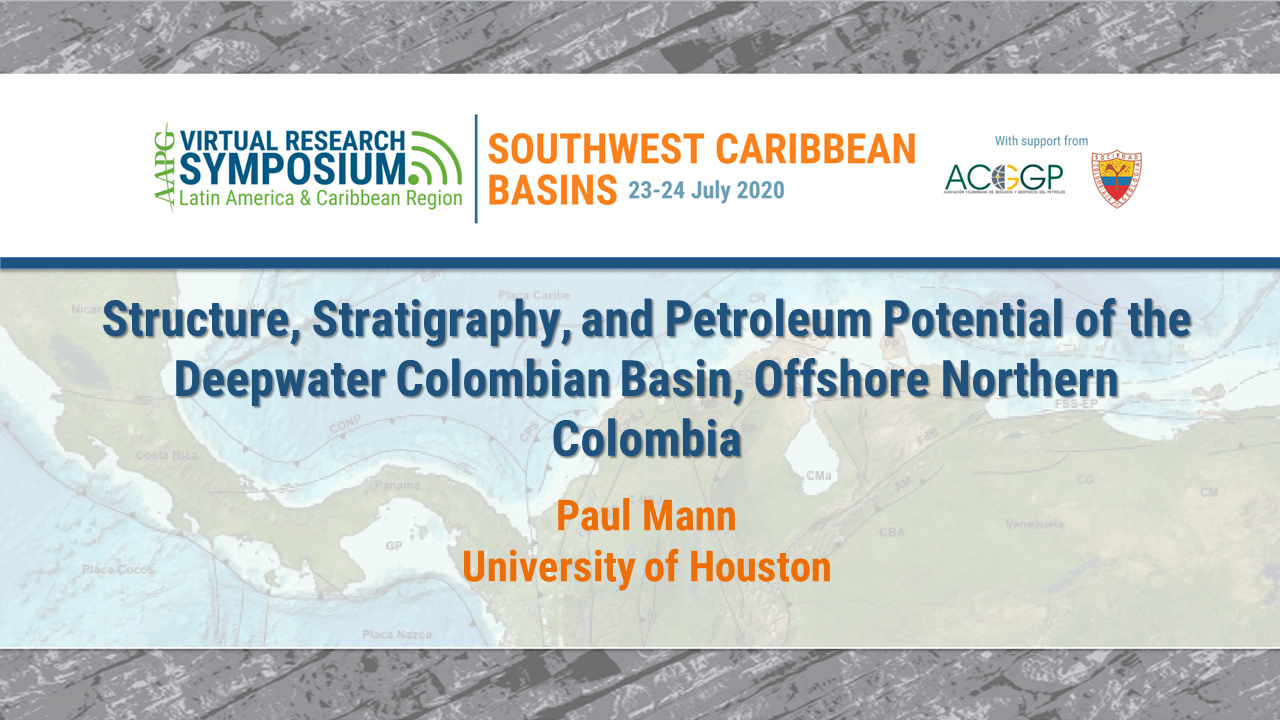
Summary
Stephen Leslie, Paul Mann (presenter), University of Houston
The structure and stratigraphy of the central area of the Colombian Basin - offshore the northern Caribbean coast of Colombia - is defined using ~8400 line km of depth-converted 2D seismic data assembled from academic and industry sources. Information from offset DSDP and ODP wells integrated into the structural and stratigraphic model of the Colombian Basin to identify the key elements of a petroleum system. These elements are; 1) Upper Cretaceous marine shale source rock;2) mid-to-upper Miocene (16 to 5.3 Ma) basin floor fans associated with the Magdalena Fan turbidite system; 3) structural traps, stratigraphic traps, or subtle three-way structural closures and 4) sealing intervals formed by Miocene hemipelagic marine shale associated with sea level high-stands. An extension of a previously recognized trap-type for the Colombian Margin is identified based on our seismic observations of amplitude anomalies conformant with structures, fluid migration pathways along faults, and bright, laterally continuous, and low-impedance seismic reflectors within the distal Miocene Magdalena fan section. The primary risk for the exploration potential of the area is the presence of a laterally extensive Upper Cretaceous source rock within this depocenter. 1D burial history models and 3D basin modeling indicate that a source rock of this age and at this stratigraphic level would have expelled hydrocarbons during mid-to-late Miocene from the deepest part of the basin and may continue to expel hydrocarbons at the present-day.
Paul Mann, University of Houston
Paul earned a BSc from the Oberlin College and a PhD from the State University of New York at Albany, both degrees in Geology.
He currently is Professor of Geology at the Dept. of Earth and Atmospheric Sciences, University of Houston, where he teaches, researches and supervises grad and undergrad students, and service to the EAS Dept. and other groups. He has also operated an oil industry-funded research group since 2005.
Paul is a member of AAPG, GSA, AGU, SEG and HGS.
Please log in to view or purchase the video presentation